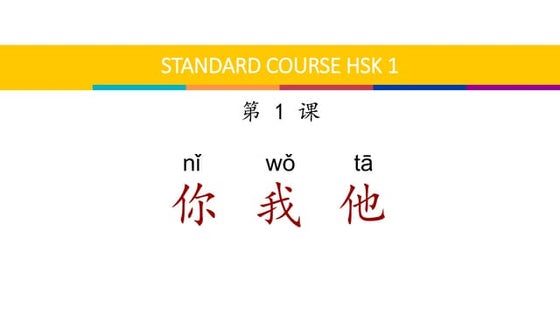Ad
补充复习题(26 -29)+改错句总复习
- 2. ? 1.我()去超市,我去书店。 ? 2.昨天你去()去打球? ? 3.今天上午我()去了,你去吧。 ? 4.她()回家,她去博物馆了。
- 3. ? 1.我昨天()看了一遍这个电影,今天不想 () 看了。 ? 2.你()听两遍就能懂了。 ? 3.我()看了看才懂。 ? 4.你今天怎么()吃包子了?你不是说包子 不好吃吗? ? 5.多漂亮啊!()照一张照片吧。 ? 6.怎么()考试?每个星期都要考试吗?
- 4. ? 1.比赛下午两点()开始呢,你怎么现在() 出发了? ? 2.电影两点()开演了,你们怎么现在() 走呢? ? 3.A:你什么时候去他家的? ? B:我吃了饭()去的。 ? 4.这件衣服我太喜欢了,试了试()买了。 ? (又 再 就 才 ) ? 5.你别着急买,试试()买!
- 5. ? 1.你 咱们 借 去 学习 书 汉语 教室 吧 就 了 ? 2.她 买 回家 衣服 完 很快 以后 了 就 我们 ? 3.我 两本 书店 那个 买 书 故事 在 了 ? 4.那儿 他 我 三张 借 从 光盘 了 电影
- 6. ? 5.她 去 银行 附近 两千块钱 换 了 的 学校 ? 6.我们 去 比赛 跟 足球 留学生队 了 操 场 踢 昨天
- 7. ? 1.A:明天他过生日,咱们给他买个蛋糕吧。 ? B:……。(还是……) ? 2.A:咱们去上海旅行吧! ? B:……。(还是……) ? 3.A:今天咱们一起去看这个电影吧。 ? B:……。(早就……了,还是……) ? 4.A:图书馆的书你还了吗? ? B:……。(早就……了)
- 8. ? 5.A:刚才去的这个饭馆怎么样?你满意吗? ? B:……(……了点儿) ? 6.A:这个菜好吃吗? ? B:……(……了点儿) ? 7.A:听说明天下雨! ? B:……(要是……) ? 8.A:你买的这本书真有意思! ? B:……(要是……)
- 9. ? 9.A:听说明天的火车票已经卖完了,怎么 办? ? B:……(要是……) ? 8.A:这套房子的阳光真好! ? B:……(虽然…但是…) ? 10.A:我已经吃药了,还用打针吗? ? B:……(虽然…但是…)
- 10. ? 1.这本书你看()了没有?我要还()我朋 友了。 ? 2.今天的生词我没复习(),听写时只写() 了两个。 ? 3.这个句子你没翻译(),还得再翻译一遍。 ? 4.今天的语法我没都听(),下课后还要问 老师。 ? 5.我买()新iphone了,不过,我买()了, 别人只用了5000块钱,我5500块钱才买()。
- 11. ? 6.A:请在这里写()你的手机号。 ? B:糟糕,手机号我写()房间号了。 ? 7.这个电影昨天我们看()哪儿了? ? 8.你怎么这么多字不认识?你还没读()课 文,回去后再读10遍! ? 9.我写()十二点就睡觉。 ? 10.他们学()12月20号就回国。
- 12. ? 1.你()电视好吗?我要休息了。 ? 2.你还是()窗户吧,太热了。V+结果 ? 3.请大家不要看书,()书,现在开始考 试。 ? 4.昨天我做作业()夜里一点。 ? 5.哎,他总把“老师,我问wèn 你一下”() “老师,我吻wěn你一下”,真没办法!
- 13. ? 1.件:一件衣服 一件事 ? 2.本:一本书 一本词典 ? 3.门:你有几门课? ? 4.节:汉语课十节还是八节? ? 5.张:一张邮票 一张光盘/CD 一张画儿 ? 6.份:一份报 一份资料 ? 7.种:这种书还有几本? ? 那种羽绒服只有白色和黑色的。
- 14. ? 8.座:一座山 一座楼 一座建筑 ? 9.条:一条马路 一条河 一条狗 一条鱼 ? 10.次:一次课一个小时 ? 这种药一天三次,一次两片。 ? 这次比赛你们输了还是赢了? ? 11.遍:再读一遍 ? 12.片:一片药 一片面包
- 15. ? 13.套:一套房子 ? 14.平(方)米:这个客厅有30多平(方)米 ? 15.层:我住这座楼25层。 ? 16.道:这次考试一共有几道大题? ? 17.页:这本书共560页。 ? 18.块:一块点心 一块牛肉 ? 19.杯:一杯牛奶
- 16. ? 题型: ? 一、看拼音,写汉字(10分) ? 二、填量词(不能写“个”)(10分) ? 三、选择正确答案(14分) ? 四、选词填空(10分) ? 五、用所给词语完成会话(20分) ? 六、改错(10分) ? 七、组句(12分) ? 八、小作文(14分)
- 17. ? 课后练习改错句: ? 1.昨天我骑了自行车去书店。 ? 2.我们八点已经开始了上课。 ? 3.我今年九月来了中国学习汉语。 ? 4.我在大学时常常参加足球比赛了。 ? 5.昨天下午我做练习了,预习生词了和复习 语法了。 ? 6.我姐姐已经毕业大学了。
- 18. ? 7.他感冒了,昨天我去了看他。 ? 8.昨天的作业我还没有做了。 ? 9.玛丽常常去了操场锻炼身体。 ? 10.昨天我没做了作业就睡觉了。 ? 11.昨天我吃了早饭就去教室。 ? 12.那天他下了课就来我这儿。 ? 13.你想想才买吧。
- 19. ? 14.你的病还没有好,病好了以后才上课吧。 ? 15.昨天我很不舒服,八点才睡觉。 ? 16.听了我的话,就玛丽很快不哭了。 ? 17.到中国以后,这个电影我再看了一遍。 ? 18.今年九月,他再来中国了。 ? 19.我学这本书完了。 ? 20.我已经完了今天的作业。
- 20. ? 21.这个问题我错了回答。 ? 22.昨天在书店我看了我们班的同学玛丽。 ? 23.现在能听老师的话懂了。 ? 24.明天我吃早饭就去买车票。 ? 25.昨天我看了电视三个小时多。 ? 26.我哥哥毕业大学已经两年了。 ? 27.吃完晚饭,我常常跟朋友谈话一会儿。
- 21. ? 28.他已经没上课三天了。 ? 29.我昨天晚上睡觉了八个小时。 ? 30.我学习汉语一个年了。 ? 31.他们的生活比以前很好。 ? 32.她说比我好得多。 ? 33.弟弟比我不高。 ? 34.他们比我们不来得早。 ? 35.弟弟比我一点儿高。 ? 36.玛丽考了成绩比我考了成绩好。
- 22. ? 37.我说汉语不很流利。 ? 38.麦克跑步得非常快。 ? 39.她每天吃饭得很少。 ? 40.她每天起床得很早。 ? 41.老师说话得比较快。 ? 42.田芳学习很努力,她英语说不错。 ? 43.你想买不买词典?
- 23. ? 44.我去图书馆要看书。 ? 45.晚上她能去跟我一起。 ? 46.这件大衣太贵了,我不可以买。 ? 47.他头疼,发烧,不会来上课。 ? 49.你能去不去旅行? ? 50.博物馆是马路的西边。 ? 52.你喝咖啡或者喝茶?
- 24. ? 53.我们学校图书馆很多有中文书。 ? 54.我们班有十七、十八个学生。 ? 55.桌子上有一些本书。 ? 56.今天的天气一点儿冷。 ? 57.我非常感兴趣书法。 ? 58.请大家不能抽烟在楼里。 ? 59.请明天你来我的宿舍吧。
- 25. ? 60.你试试的这件衣服怎么样? ? 61.这课课文一点儿难。 ? 62.这件衣服一点儿深颜色,我不喜欢。 ? 63.你应该写信你妈妈。 ? 64.我们跟中国同学聊天儿用汉语。 ? 65.我找王老师去办公室。 ? 66.她借书去图书馆。 ? 67.都我爸爸妈妈是大夫。
- 26. ? 68. 我明天下午有上课。 ? 69.我们的学校是很大。 ? 70.我们班有十八个留学生们。
- 27. ? 26课: ? 不是……吗? ? 27课: ? 1.就+V+(了)+(数量)+宾语: ? 就喝了一杯啤酒/就买书,不买别的 ? 2.别……了: ? 请大家别说话了 ? 3.动词重叠AAB:跳跳舞 跳了跳舞
- 28. ? 28课: ? 1.adj+了(一)点儿: ? 客厅面积小了点儿。 ? 2.还是…… (+二册第一课) ? 我还是想要上下午都有阳光的。
- 29. ? 30课: ? 1.对: ? 对这儿的生活已经习惯了。 ? 练气功对身体很有好处。 ? 对这儿的生活很满意。 ? 对书法很感兴趣。 ? 2.练了好几年了:


































































